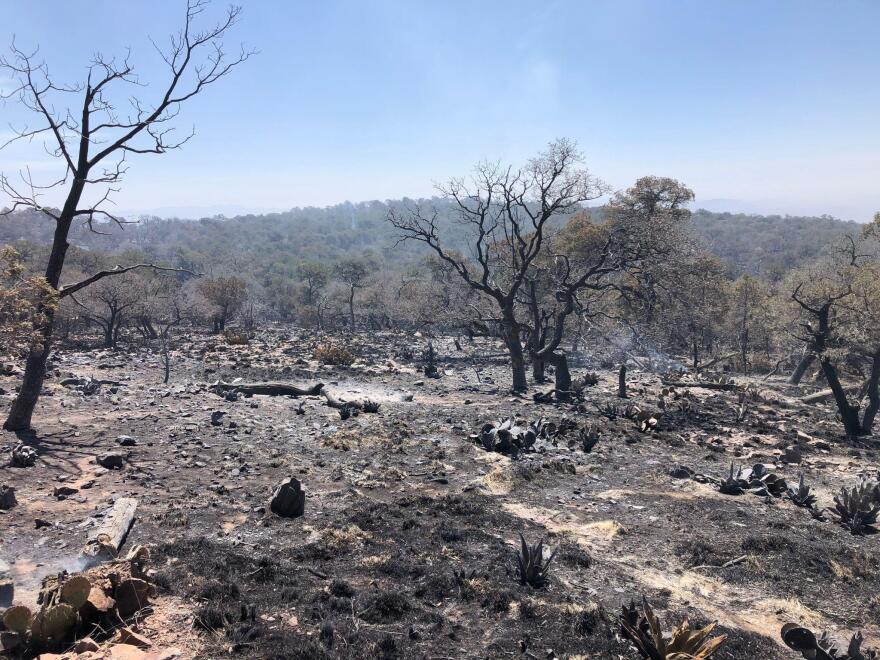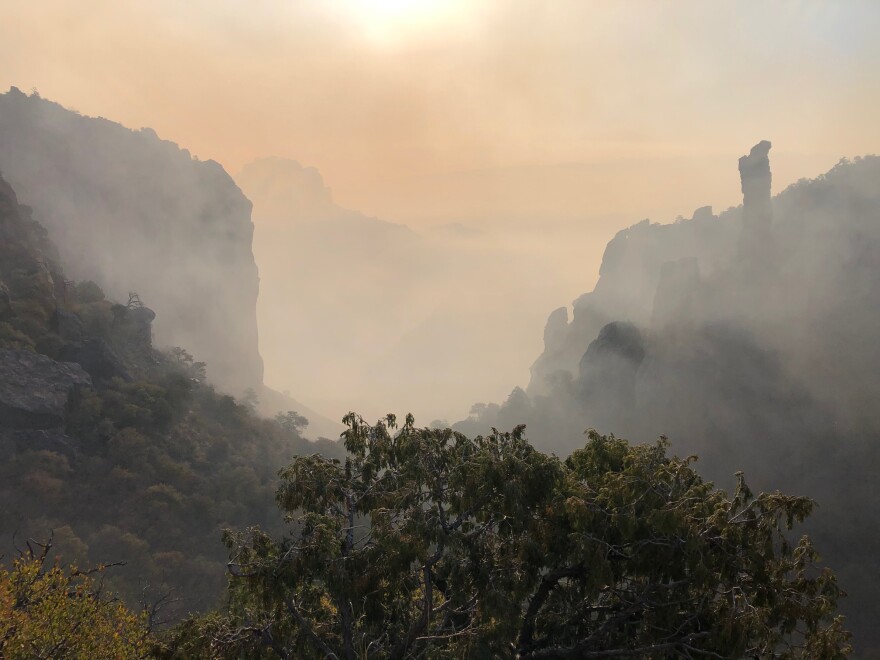Firefighters in Big Bend National Park continue to battle the South Rim Fire, which has burned through hundreds of acres since last week. The wildfire is currently burning in the Chisos Mountains and officials have closed campsites and trails in that area.
By Mitch Borden
Dozens of firefighters in Big Bend National Park continue to battle the South Rim Fire, which has burned through some 860 acres made up of brushy scrub and pinyon pines.
As of Monday, the wildfire is about 13% contained, according to park officials. And the intensity of the fire— which was first observed late last week—has been low to moderate across much of the affected area, causing firefighters to hold back from taking more aggressive action.
At this point, firefighters are attacking the fire and working to contain it, but aren’t digging trenches or cutting down trees, because those measures aren’t needed and park officials believe doing so could cause more damage than the actual fire.
“We’re attacking the fire where we can, and trying to keep it down from spreading at this point,” said park spokesperson Tom VandenBerg. But we’re not really getting in there and really aggressively cutting and trenching and things like that unless we really have to.”
While park officials haven’t officially determined the cause of the wildfire, VandenBerg said it’s possible that it started naturally, but there are reasons to believe human activity sparked the South Rim Fire.
“It started near a backcountry campsite, which is a little suspicious,” said VandenBerg. “But that's about all we can say right now. We have not had a chance to do any investigation of it.”
In the days and weeks before the fire was first observed, VandenBerg said there were lightning strikes in the area, so “there's potential that it's natural.” But while lightning strikes and natural fires aren’t rare in the Chisos Mountains, they often happen during late summer months. “[It’s] not typically the time of the year we would see a fire up there, “VandenBerg said. “So there's a few things that are a little suspicious and we'll find out and we'll share that with the public.”
Over the weekend, park officials reported the fire reached the summit ridge of Emory Peak and was visible from the Chisos Basin, forcing the park to close the chisos campground and lodge. Access to this part of the park—including trails in the area—will remain closed until further notice to provide room for fire crews to respond to the blaze. But visitors do have access to other corners of the sweeping 800,000-acre park.
The nearly 70 firefighters battling the South Rim Fire include the well-known Los Diablos fire crew from Mexico and another team from New Mexico.
VandenBerg said some of the 860 acres currently affected by the wildfire haven’t seen a burn like this since 1950, and the fire could support the park’s ecology and help vegetation flourish in the coming years.
“What often happens is after there’s been a fire like that, it cleans the area, it opens up barren earth,” said VandenBerg. “Then the years following a fire like that is when you tend to have a lot of recruitment, a lot of new trees.”
Natural fires in the tree-covered stretches of the Chisos Mountains is a fundamental part of the ecological process, said VandenBerg.
“There were areas where it burned a lot of dead brush that has been accumulating for years,” he said. “I think in the long run it will be a good thing for that ecosystem.”




